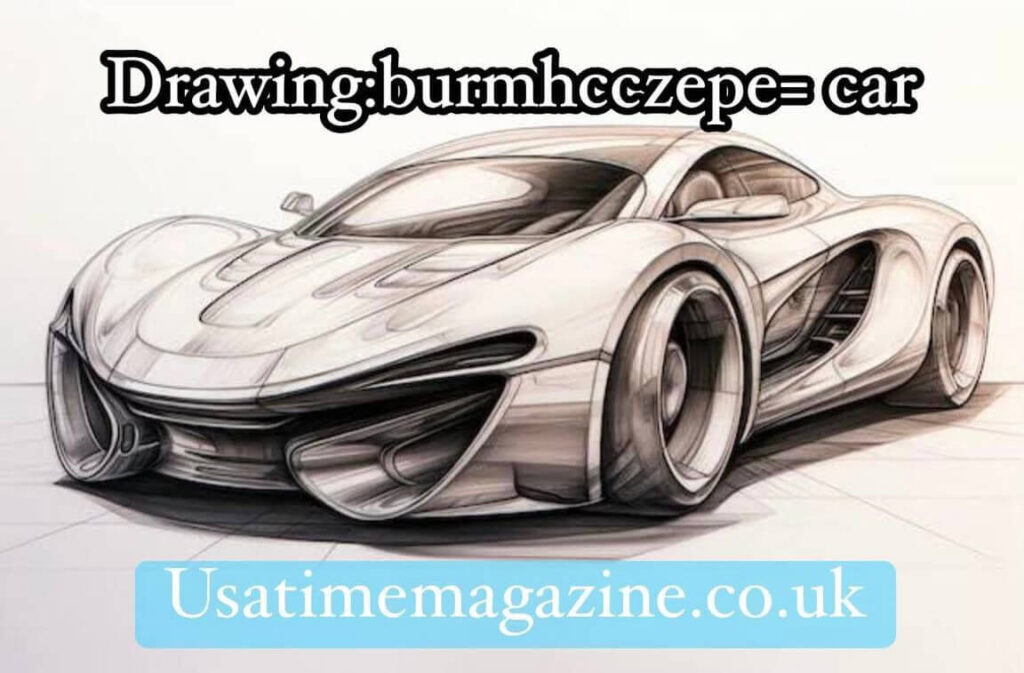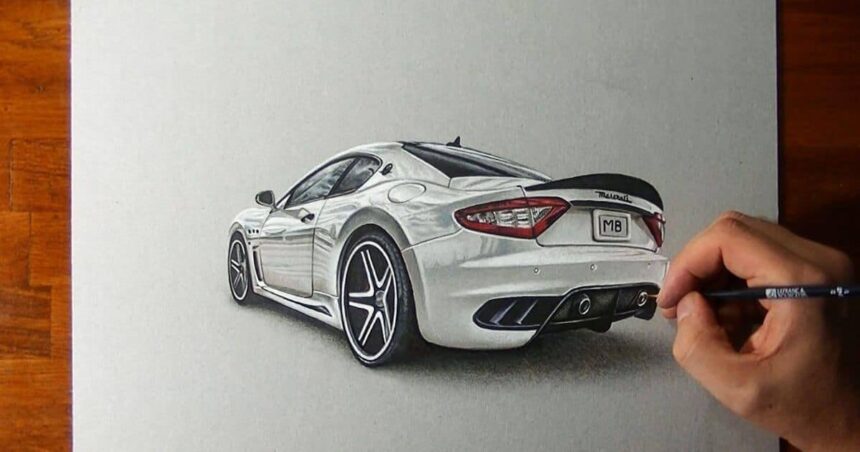Have you ever felt the thrill of watching a sleek sports car zoom by, its design captivating your imagination? Or perhaps you’ve daydreamed about classic muscle drawing:burmhcczepe= car and their roaring engines while sketching out your own automotive masterpiece? Whether you’re an aspiring artist or just looking to explore a new hobby, drawing cars offers endless opportunities for creativity and expression. In this blog post, we’ll rev up our pencils and dive into the world of automotive artistry—exploring techniques, tips, and inspiration that will help you bring those four-wheeled wonders to life on paper. So buckle up; it’s time to hit the artistic highway!
Introduction to drawing:burmhcczepe= car and its benefits
Drawing is a powerful form of expression that transcends age and skill level. Whether you’re a seasoned artist or just picking up a pencil for the first time, the act of drawing can ignite your creativity and provide endless hours of enjoyment. One popular subject that many enthusiasts gravitate towards is cars. They embody speed, style, and innovation – making them an exciting challenge to capture on paper.
But have you ever heard of “drawing:burmhcczepe= car”? It might sound like a code at first glance, but it’s simply an intriguing way to explore the art of drawing cars in various styles and designs. If you’ve been itching to refine your skills or start from scratch with automotive illustrations, this guide will take you through each step. Let’s rev up our pencils and dive into the world where artistry meets engineering!
Understanding the concept of drawing:burmhcczepe= car
The term “drawing:burmhcczepe= car” may seem cryptic at first glance. However, it represents a unique approach to car illustration that encourages creativity and exploration.
This concept blends traditional drawing techniques with innovative ideas. It challenges artists to think outside the box. Rather than focusing solely on realism, this style invites you to play with shapes and styles.
Imagine transforming classic vehicle forms into something abstract or futuristic. The goal is not just accuracy but also expression. Each line can tell a story or evoke emotions tied to speed, freedom, or adventure.
Embracing “drawing:burmhcczepe= car” opens doors for personal interpretation in automotive art. It’s an invitation for artists of all levels to experiment and discover their own voice through their creations.
Step by step guide on how to draw a drawing:burmhcczepe= car
Start by sketching the basic shape of the car using simple geometric forms. Draw a rectangle for the body and circles for the wheels. This helps establish proportions.
Next, refine your outline. Add curves to create a sleek silhouette. Pay attention to details like windows, headlights, and bumpers.
Once you’re satisfied with your outline, use an eraser to clean up any unnecessary lines. It’s time to add some personality—consider what style or model you want your car to represent.
Fill in areas with light shading to give depth. Focus on where shadows naturally fall; this will enhance realism.
After shading, mix it up! Experiment with colors if you’re using markers or colored pencils. Choose shades that fit your vision of the “drawing:burmhcczepe= car.”
Lastly, don’t rush through detailing—elements like rims and reflections make a significant difference in bringing your drawing alive.
Tips and techniques for creating realistic drawing:burmhcczepe= car
To create realistic drawing:burmhcczepe= car, start by observing real vehicles. Notice the angles, curves, and proportions. Use reference photos for accuracy.
Next, focus on basic shapes. Break down the car into simple forms like rectangles and circles. This will help you maintain correct perspective as you add details.
Shading is key to realism. Experiment with different pencil pressures to achieve gradients that mimic light reflection on metal surfaces. Blend with a smudge tool or your finger for smoother transitions.
Don’t forget about textures. Cars have various materials—metallic finishes, glass reflections, and rubber tires all require unique techniques.
Lastly, practice regularly but don’t rush. Take your time to refine each aspect of your drawing before moving onto the next section for impressive results in capturing the essence of a car.
Inspiration and ideas for different styles and designs of drawing:burmhcczepe= car
Exploring different styles for your drawing:burmhcczepe= car can be a thrilling adventure. You might want to start with classic muscle cars, emphasizing their powerful lines and bold colors. Think about the shiny chrome details that catch the light.
Alternatively, consider sleek sports cars. They offer dynamic angles and a modern aesthetic. Capturing motion in these designs creates an exhilarating feel.

Another route is vintage automobiles, where you can play with intricate patterns and nostalgic hues. These designs tell stories of bygone eras.
You could also venture into futuristic concepts by blending imaginative shapes with vibrant color schemes. Experimenting with electric or hybrid vehicles allows creativity to flow freely while still being relevant.
Don’t forget about incorporating personal touches like unique decals or custom rims that reflect your personality! Let each sketch resonate with your artistic voice and style, transforming every piece into something memorable.
Tools and materials needed for drawing:burmhcczepe= car
When diving into the world of drawing a “drawing:burmhcczepe= car,” having the right tools is essential. Start with quality pencils; they offer varying degrees of hardness, perfect for sketching and detailing.
An eraser is equally important. A kneaded eraser works wonders for lightening areas without damaging your paper.
For outlining, consider using fine liners or ink pens to create crisp lines that stand out.
Don’t forget about paper! Choose something with a bit of texture to hold your pencil strokes better.
If color is part of your vision, colored pencils or markers can bring life to your design. Remember to have blending stumps handy if you want smooth transitions between shades.
Lastly, keep a ruler close by for straight edges and accurate proportions. Having these materials at hand will make your drawing process smoother and more enjoyable.
Common mistakes to avoid while drawing:burmhcczepe= car
When drawing a “drawing:burmhcczepe= car,” beginners often overlook proportions. Misjudging the size of wheels or windows can throw off the entire design.
Another common pitfall is neglecting perspective. Cars are three-dimensional objects, and failing to capture depth will result in flat drawings that lack realism.
It’s also easy to get caught up in details too soon. Focusing on intricate lines before establishing basic shapes can lead to frustration later on.
Avoid sketching with too heavy a hand. Light pencil strokes allow for easier corrections during the process.
Lastly, don’t forget about reference images. Working without visual aids may hinder your understanding of angles and features essential for an accurate representation.
How to add details and shading to enhance your drawing:burmhcczepe= car
Adding details and shading can transform a simple drawing:burmhcczepe= car into a stunning piece of art. Start by observing the car closely. Notice how light interacts with its surfaces.
Use a range of pencils to create depth. Softer pencils like 2B or 4B are perfect for dark shadows, while harder ones like H or 2H work well for lighter areas. Layering is key; build shadows gradually rather than going too dark right away.
Focus on highlights as they define shape and dimension. Use an eraser to lift graphite gently from areas that catch the most light.
Don’t forget texture! Adding small lines or dots can mimic reflections on metal surfaces, making your car look more realistic.
Remember, practice makes progress. Experiment with different techniques until you find what resonates with your style and vision.
Advantages of practicing drawing:burmhcczepe= car regularly
Practicing drawing:burmhcczepe= car regularly offers a multitude of benefits. It sharpens your observation skills, allowing you to notice details that often go unnoticed.
Each stroke enhances hand-eye coordination, making your movements more precise over time. This improvement translates not just to art but also to everyday tasks.
Regular practice fosters creativity. As you draw more, ideas flow effortlessly and innovation becomes second nature. You’ll find yourself thinking outside the box.
Additionally, it can be therapeutic. Engaging in drawing provides a mental escape from daily stresses, serving as an outlet for expression and reflection.
Moreover, consistency builds confidence in your abilities. With each completed piece, you recognize growth and gain motivation to tackle even greater challenges ahead.
Embracing routine practice sets the foundation for mastery in any artistic endeavor while nurturing a lifelong appreciation for creativity and self-expression.
Conclusion
Drawing is not just a skill; it’s an expression of creativity that can bring joy and fulfillment. When it comes to creating a “drawing:burmhcczepe= car,” the process becomes even more exciting. It allows you to explore various styles, experiment with shapes, and express your unique vision on paper.
The fun lies in every stroke of the pencil as you breathe life into your artistic interpretation of vehicles. Whether you’re sketching sleek sports cars or classic models, each drawing tells its own story. The act of putting pencil to paper fosters relaxation and stimulates mental well-being.
As you embark on this journey of artistic creation, remember that mistakes are part of growth. Embrace them! They often lead to unexpected outcomes that enhance your skills further. With practice, your ability will evolve significantly.
So grab your tools and let your imagination run wild! Enjoy the process and find happiness in each completed piece—a true testament to the art behind “drawing:burmhcczepe= car.”
